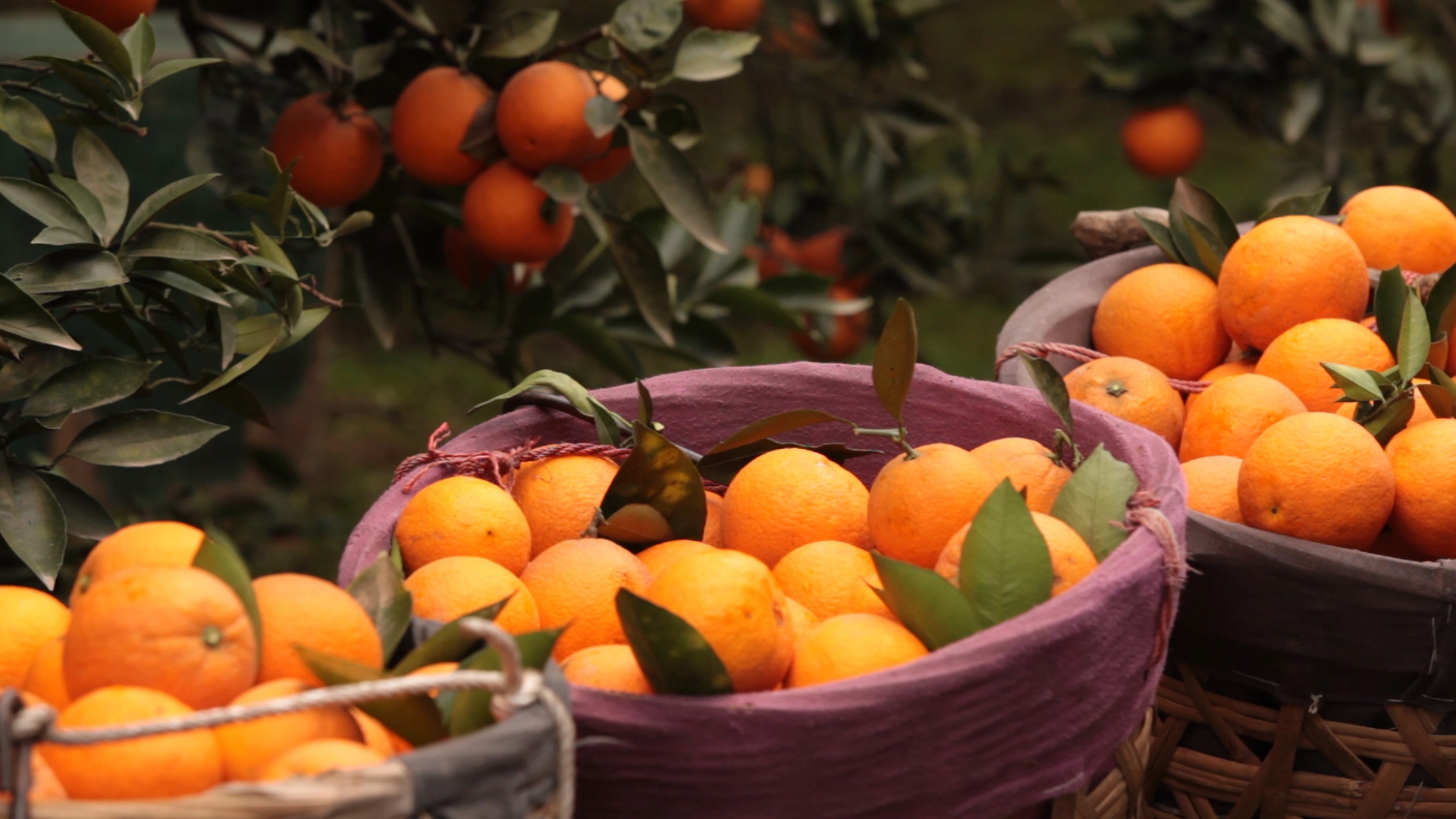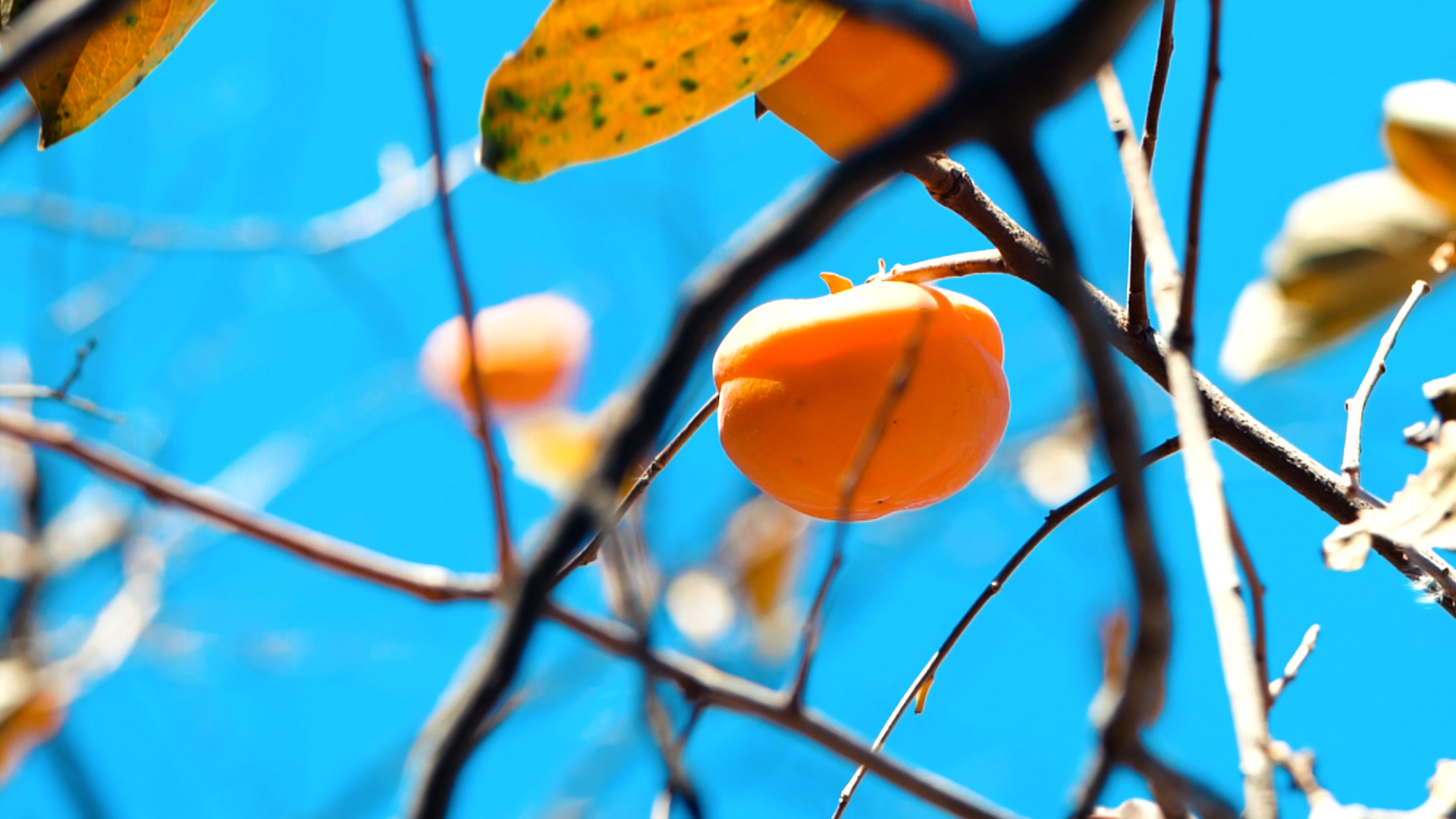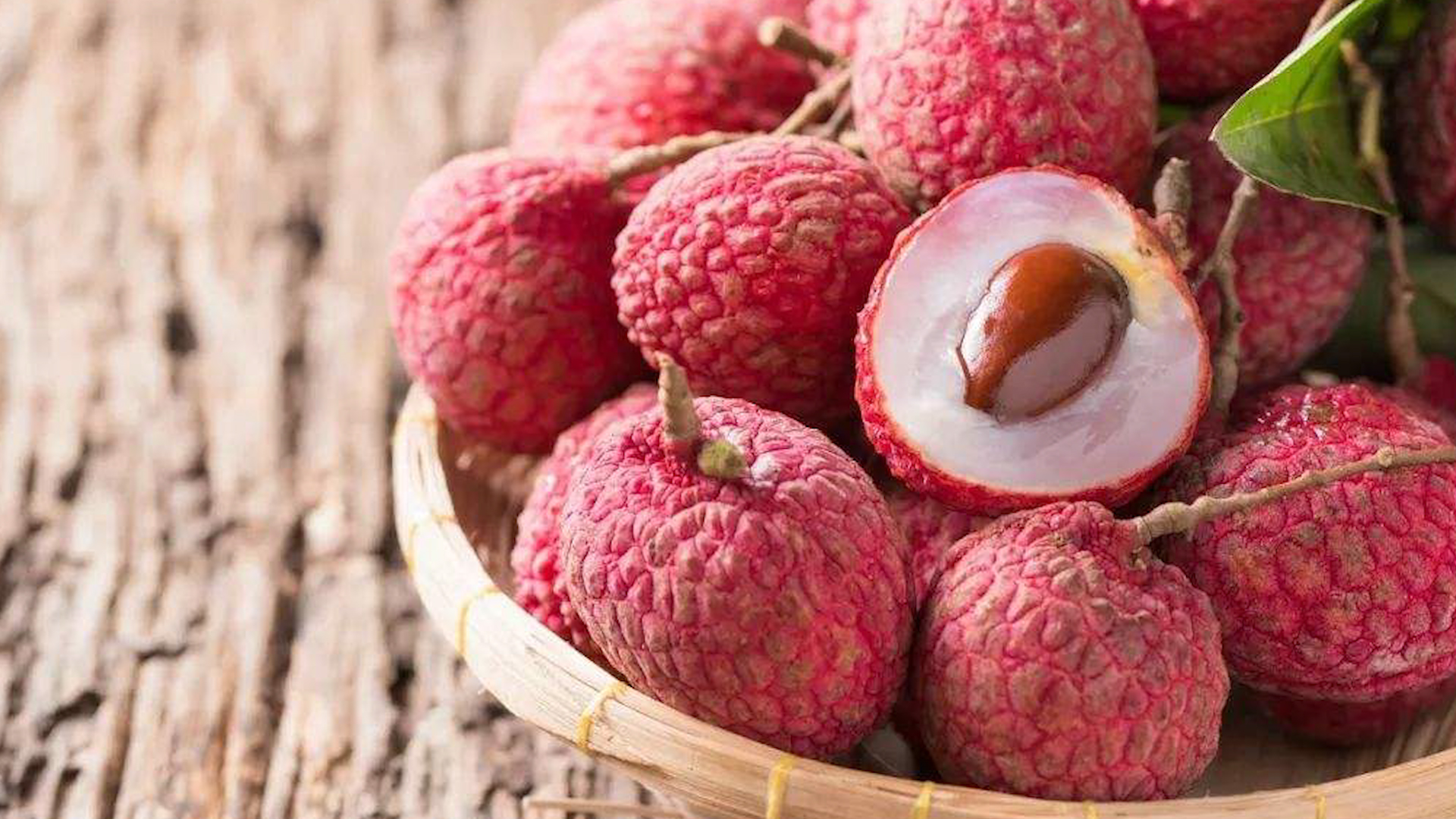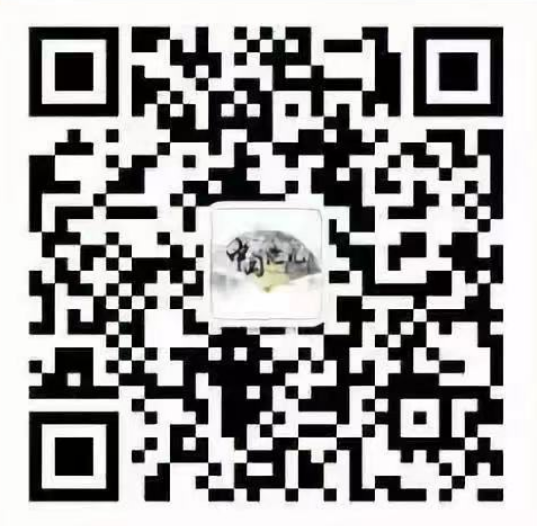水果的自白:我的家乡在中国
今年中国国庆档电影《我和我的家乡》上映8天票房便突破18亿,成为票房冠军。金秋时节,硕果的飘香是让游子魂牵梦绕的家乡味道,而众多源自中国的水果,也在讲述着自己的家乡故事。
"My People My Homeland" released on China’s national day has raked in 1.8 billion yuan in just eight days, smashing box office records. In the golden autumn season, the fragrance of fruits reminds people of home and haunts their memories. Many fruits from China are telling stories of their hometown.

“橘生淮南则为橘,生于淮北则为枳”,这句话出自战国末期的一篇散文。据史料记载,中国自汉代起就有“橘官”,专门负责管理橘园和公田。著名诗人杜甫还曾在夔州(今重庆奉节一带)做过近两年的橘官,在那里留下了430余首佳作。据考证,直到公元1471年,橘、柑、橙等柑橘类果树才从我国传入葡萄牙里斯本,至今,橘子在荷兰和德国都还被称为“中国苹果”。
"Tangerine is called Ju in the south of Huai River Huai and Zhi in the north of Huai River. This sentence is part of an essay written in the late Warring States Period. According to historical records, "orange officers" existed in China since the Han Dynasty and were tasked with the management of orange orchards and public fields. Du Fu, a famous poet, once worked as an orange officer in Kuizhou (now Fengjie area of Chongqing) for nearly two years, initiating more than 430 excellent projects there. According to research, it was not until 1471 AD that tangerines, oranges, mandarin oranges and other citrus fruit trees were introduced to Lisbon, Portugal. Even now, oranges are known as "Chinese apples" in Holland and Germany.

“柿”在中文里谐音“世”“事”,中国古人常常将饱含喜庆吉祥的寓意融入其中,如“四世同堂”“事事如意”等。据史料记载,柿子原产自中国长江流域及西南地区,距今已有三千多年的栽培史。日本人对柿子情有独钟,在吉野市建立了世界上最早的柿子博物馆,但其实柿树于唐代才从中国传入日本;美国1863年才从东方国家引入柿种。
"Persimmon" is a homonym for "generation" and "event" in Mandarin. Ancient Chinese often understand it to denote happiness and auspiciousness with meanings such as "four generations at the same time" and "everything goes well". According to historical records, persimmon originated from the Yangtze River Basin and southwest China, where it has been cultivated for more than 3,000 years. The Japanese love persimmons and set up the world's earliest persimmon Museum in Yoshino City. However, persimmon trees were introduced to Japan from China in the Tang Dynasty and persimmon species were introduced from eastern countries in 1863 to the United States.

猕猴桃没有橘、柿子那么幸运,经常被认错国籍。1904年,猕猴桃被前来中国探亲的教师伊莎贝尔带回新西兰,经历多次改良,最后种植成功。因多毛的外表与颜色形似新西兰国鸟奇异鸟,因而得名“奇异果”。但早在1200多年前,中国大诗人岑参就曾把猕猴桃写进诗里:“中庭井阑上,一架猕猴桃。石泉饭香粳,酒瓮开新槽。”在2008年举行的国际猕猴桃大会上,全球19个国家200多位专家一致认定:猕猴桃的原产地是中国湖北省宜昌市。
Kiwi fruit is not as lucky as tangerines and persimmons and its identity and nationality is often mistaken. In 1904, kiwi fruit was brought to New Zealand by Isabel, a teacher who returned from visiting relatives in China. After experimenting with several methods, the kiwi fruit was finally planted successfully. It got its name because of its hairy appearance and color which resembled a kiwi, the national bird of New Zealand. But as early as 1,200 years ago, Cen Shen, a great Chinese poet mentioned about the kiwi fruit in his poem: "There is a kiwi at the end of the courtyard well. Rice made by Shiquan spring is fragrant and the wine jar has a new slot. " At the international kiwi fruit conference held in 2008, more than 200 experts from 19 countries all over the world agreed that the origin of kiwi fruit was in Yichang City, Hubei Province, China.

中国地大物博,物产丰富。新疆的哈密瓜、甘肃的人参果、浙江的杨梅、长三角的水蜜桃、岭南的荔枝……年复一年生长,春华秋实丰登,万紫千红绽放,这大概就是中国水果“秀家乡”的方式,不管生长在哪片土壤,不管日日夜夜经历哪些风霜,不管离乡、回乡、离别、重逢,总能散发沁人心脾的果香,绽放酸甜可口的滋味,满足着人们的味蕾的同时,让人想起家乡的味道。
China has a vast territory and abundant resources. It’s the land of Xinjiang Hami melon, Gansu ginseng fruit, Zhejiang bayberry, Yangtze River Delta peach and Lingnan litchi. Growing year after year, the fruits flower in spring and bear produce in autumn. With their bright hues and rich aroma, they capture the essence of where they are grown. No matter what soil they grow in, what kinds of wind and frost they are exposed to and whether they grow in their hometown or in an alien land, their fragrance remains the same, their sweet and sour taste intact. Each flavour is tinged with nostalgia, recalling with each bite, the memory of time gone by.










